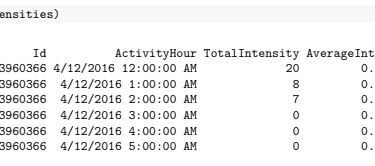Bellabeat Fitness Device Consulting Data Analysis
Finding the best recommendation for Bellabeat's stakeholders


The full research and details for this project can be found here.
Company Background
Bellabeat is a high-tech company that manufactures health-focused smart products including Bellabeat app, Leaf, Time and Spring. It also offers a subscription-based membership program for users giving them access to personalized guidance on having a healthy lifestyle. Bellabeat has positioned itself as a tech-driven wellness company for women.
Bellabeat has been investing extensively on digital marketing including Google Search and being active on social media platforms. The co-founder Sršen knows that an analysis of Bellabeat’s available consumer data would reveal more opportunities for growth.

Processing the Data
This project utilizes popular libraries such as tidyverse, lubridate and R Programming Language. The data is retrieved from a public database on Kaggle.
We will be processing the daily data for the users’ activity, calories burned, and sleep. The intensities will be processed by the hour so we can see when users are most active.
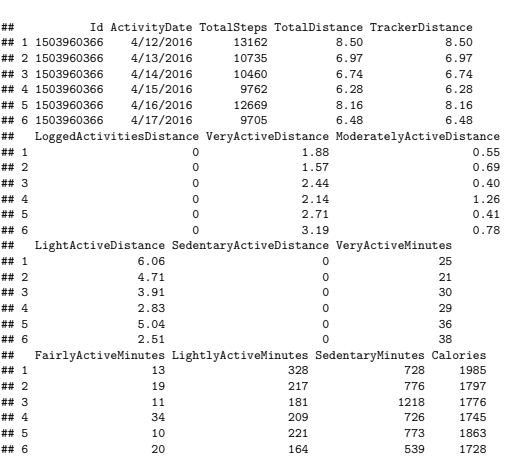

Each of these datasets consists of the users' ID and its relative measures according to the dataset. Below shows a snippet of the dataset from activity:


Objective
Smart devices are a big part of people’s everyday life. As a smart device manufacturer, Bellabeat can benefit from learning the trend of smart device usage and make data-driven business strategies to explore opportunities for growth.
Key stakeholders:
Urška Sršen: Bellabeat’s cofounder and Chief Creative Officer
Sando Mur: Mathematician and Bellabeat’s co-founder; key member of the Bellabeat executive team
Good starting points would be:
Investigating the products that have similar functionality
Drill down to explore user behaviors when using the product in order to identify any usage trends
Apply the trend on Bellabeat products to identify recommendations on functionality and marketing strategies
Insights from the investigation can help Bellabeat to identify weaknesses of their products and new functions or even inspire ideas on new products.
It can also help to inform marketing strategies like knowing the segment of the age group that is the most active user of smart devices, then Bellabeat can invest in focusing on a specific age group when doing marketing campaigns in the future.
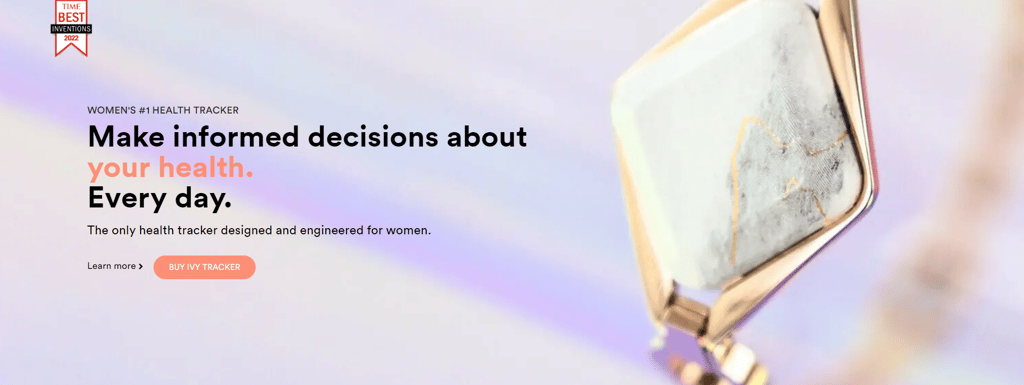

Prepare the Data
The data used in this analysis is the Fitbit Fitness Tracker Data made available by Mobius stored on Kaggle.
This dataset is under CC0: Public Domain license meaning the creator has waive his right to the work under the copyright law.
The data contains personal fitness tracker from thirty fitbit users. Thirty eligible Fitbit users consented to the submission of personal tracker data, including minute-level output for physical activity, heart rate, and sleep monitoring. It includes information about daily activity, steps, and heart rate that can be used to explore users’ habits.
These datasets were generated by respondents to a distributed survey via Amazon Mechanical Turk between 03.12.2016-05.12.2016.
The dataset has in total 18 files in .csv format organized in long format.
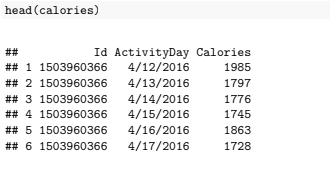

Here is the calories dataset:
the intensities:
And the sleep data:
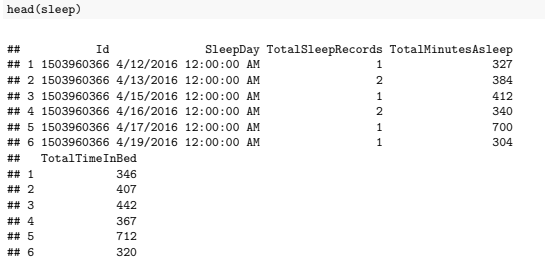

Data Cleaning and Manipulation
In order to create a more coherent data set with the intensities data, I've decided to clean and aggregate the entire dataset to find the average hourly intensity of users.
Since the original format was in a string format, I had to convert the string to datetime in order to extract the HMS by reconverting to HMS in string format in order to aggregate and find the average intensity for all users.
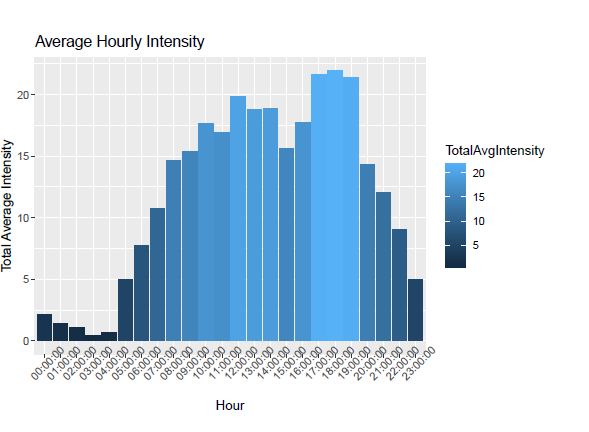

Exploratory Data Analysis (EDA)
With the ‘n_distinct’ function, we are able to identify that there are 33 participants in daily activities, calories, and intensities, while sleep has 24. Since the discrepancies between 33 and 24 is not too large, we will continue using these data sets for our analysis.
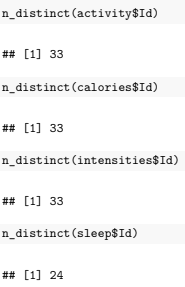

Looking at the daily activity’s averages(mean) in this summary, we can see that the Sedentary Minutes(991 minutes or 16.5 hours) is more than 4x the combined minutes from Very Active, Fairly Active, and Lightly Active(combined sum: 228 minutes or 4 hours).
This massive difference may give us a clue that most Fitbit users are inactive. Looking into the Sleep Minutes may give us a better clue as to how much of those Sedentary Minutes are spent asleep.
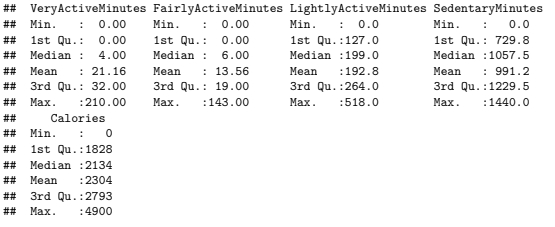

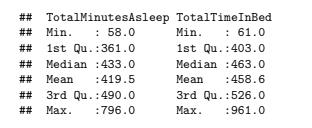

It looks like users spend a little under half their inactivity in bed. Which still leaves 532 minutes or about 9 hours inactive outside of bed. With this 9 hour inactivity remainder, we can conclude that users may be busily inactive during their full time job, or their routine is full of inactivity.
We can get a better understanding of users’ routine by looking at their average hourly intensity. From this table we can see that users are mostly active after 5 PM.
Here we can see the massive coverage of Sedentary Minutes compared to all the other active states combined. From the plot, the Sedentary minutes take up approximately 16.5 hours or 81% of the total average activity.
To get a clearer understanding, we can see when users are mostly inactive. Here we can see the difference of intensities after 5PM from users.

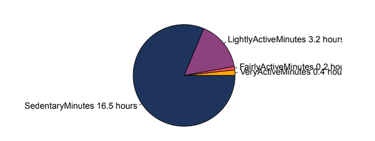
Conclusions & Recommendations
In conclusion, we can see that the average user spend most of their time in the Sedentary state. The data also shows us that the average user has a routine in which their most active period is after 5 PM and before 8 PM. With this knowledge I can make a few recommendations to help Bellabeat’s marketing department.
Bellabeat can:
Send users motivational messages based on their most active time of day to further push them to be active.
Send sleep reminders based on their time of inactivity at night
Award users who have completed workouts to motivate them to continue being active
Set a program for users to interact and challenge their friends
The full research and details for this project can be found here.
